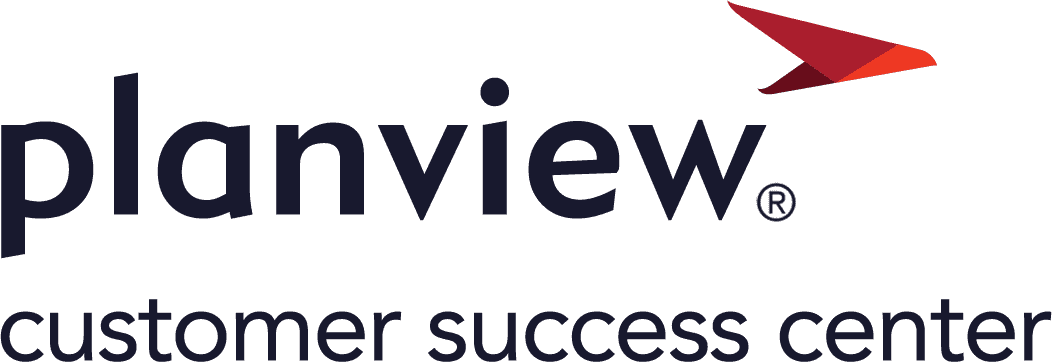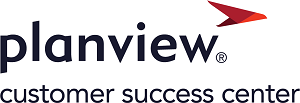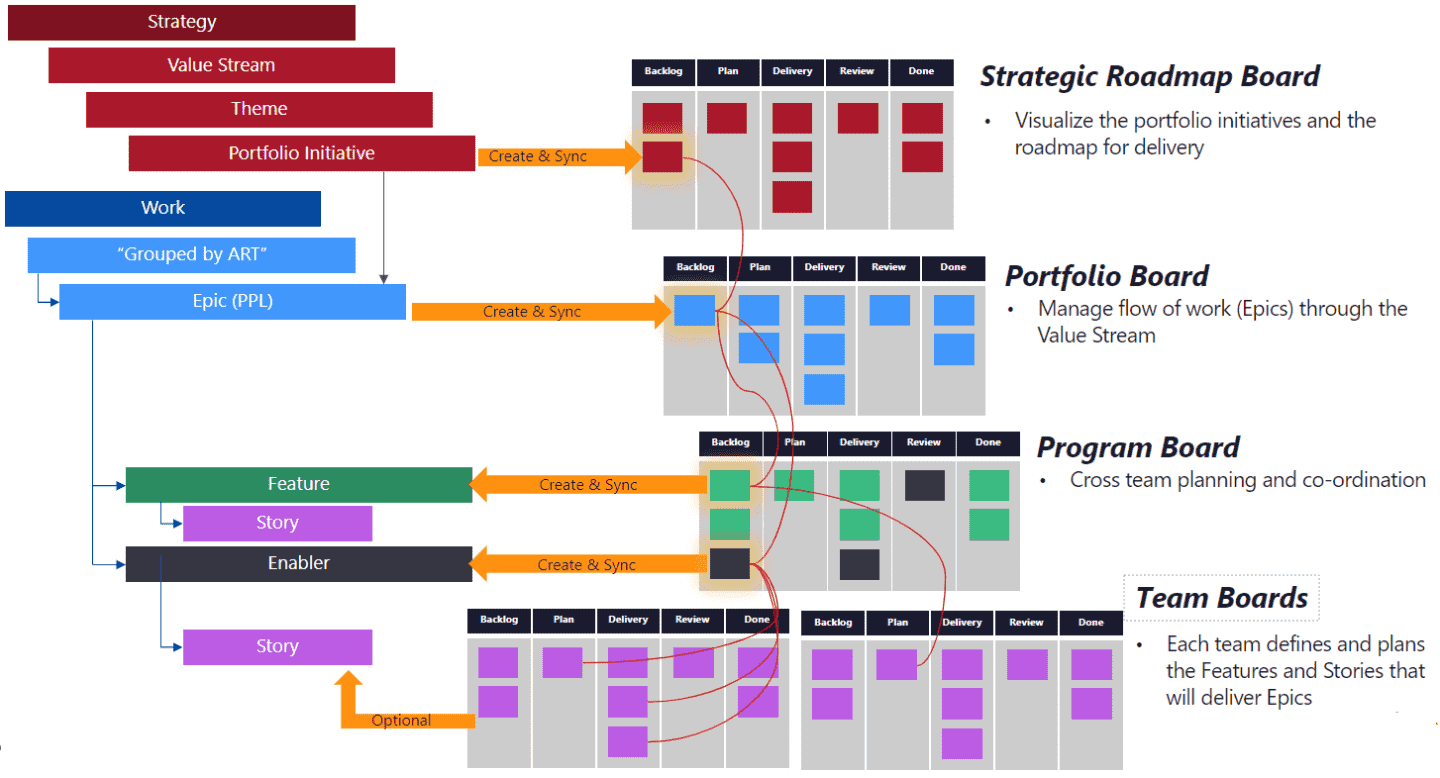Portfolios process flows
Overview
This guide provides an in-depth overview of how the portfolio planning capability helps organizations manage their portfolio of existing and backlogged agile epics from intake to development. Learn how to create, describe, and prioritize agile work in Planview Portfolios as lean business cases, then seamlessly sync prioritized work to Planview AgilePlace for visualization on a portfolio Kanban board. Discover how portfolio epics are sequenced into timeboxed sprints and broken down into features and stories to be delivered by teams. As work progresses, portfolio investment data is continuously updated to inform investment decisions in future planning periods. This guide covers the tools, processes, and best practices needed to efficiently plan, manage, and execute your portfolio's agile initiatives.
Intake and lean business case
Process steps

| Process step | Description |
|---|---|
|
Create agile work |
Create a record of the new agile work in Planview Portfolios. Agile work is created at the PPL level of the work structure. |
|
Describe and categorize agile work |
Populate configuration-specific description and categorization attributes into the new agile work as determined by the data and information needs of the organization. |
|
Capture prioritization information |
Capture prioritization information either within fields or directly on the financial plan. |
|
Capture additional business case information |
Capture financial information on the agile work or directly on the financial plan. Other types of governance information may include sizing, priority, or other aspects of a lean business case. |
Reports
How are we able to intake new epics? How can we review and prioritize them against the lean business case?
|
Requests Portfolio – Portfolio Manager – Customizable Column Set |
Tile |
This tile allows you to see request data in a customizable column set with data such as start date, status, and more. |
|
Requests Portfolio – Portfolio Manager – Active Requests |
Tile |
This tile shows you active requests in the portfolio. |
|
Requests Portfolio – Portfolio Manager – New Requests |
Tile |
This tile shows you new requests in the portfolio. |
|
Requests Portfolio – Portfolio Manager – Pending Requests |
Tile |
This tile shows you pending requests in the portfolio. |
|
Analytic |
This report allows you to analyze work requests by category, originating business unit, or any configured single select work request structures. |
|
|
Analytic |
This report provides a count of request attributes to help you analyze the portfolio. The report allows you to choose which attributes are used to slice the data. |
|
|
Standard Analytic Report |
This chart shows the current distribution of cards within a board by lane, priority, type, or custom icon. These snapshots provide a quick overview of how work items are distributed across your board, and how much capacity is dedicated to different types of work. |
Portfolio backlog management
Process steps

| Process step | Description |
|---|---|
| Key prioritized work |
The output from the prioritization event will be the key prioritized work, sequenced into sprints within the Program Increment (PI). Publishing these may trigger steps within a lifecycle. |
| Sync agile work to Portfolio Board |
The sync process is often completed as part of a lifecycle. The following diagram shows the data sync at different steps in the process. The blue boxes show the sync of agile work at the PPL level of Planview Portfolios to a Planview AgilePlace Portfolio Board.
|
|
Sequence agile work into appropriate timeboxes (e.g., Program Increment) |
Sync key prioritized work into AgilePlace, and make any adjustments if necessary. Even if epics were sequenced as part of investment and capacity planning, they will need to be put into the correct sprint in AgilePlace. |
|
Deliver agile work through underlying features and stories |
Build out the appropriate features and stories on the program and team program boards. Move work toward completion as underlying work is accomplished. As the organization goes through the cyclical process of delivering agile work through the underlying features and stories, the leading and lagging indicators will collect data. Based on the work's performance against projected delivery forecasts, persevere or pivot decisions will need to be made. Making these decisions each quarter instead of each year as part of annual planning increases agility at the enterprise level. This cyclical process will roll data back into the next PI Planning when investments are re-analyzed. |
Reports
How are we able to see what is in the backlog?
|
Analytic Report |
This chart shows the current distribution of cards within a board by lane, priority, type, or custom icon. These snapshots provide a quick overview of how work items are distributed across your board, and how much capacity is dedicated to different types of work. |
Best practices
Rely on roadmaps
Use roadmapping to connect strategy, investments, projects, and resources to ensure your organization is on track with its key deliverables. This allows you to coordinate across schedules, milestones, releases, and financials of each outcome with key information about associated programs and epics while managing work dependencies.
Use an OKR framework
Using an objectives and key results (OKRs) framework can help you stay focused on the outcomes and benefits of an epic. At every level of an organization, objectives name what teams want to accomplish and key results name how teams will measure success. The relevance for PMOs is an outcome-based approach and ability to accurately measure value.
Give teams just enough governance
Empower teams to make choices about how they will deliver work in alignment with epics and encourage autonomy and collaboration. This adaptive governance model pays off with greater efficiency and enables PMOs to focus on getting their teams what they need and giving guidance on key decisions.
Shift to continuous or quarterly planning
Adapt to ongoing change by adopting a continuous planning model. Working according to short-term programs and epics enables an organization to gather, review, and incorporate customer feedback quickly while delivering value.
Centralize your data
Demonstrating your epic’s value and expected benefits to key stakeholders requires having the right high-level view of information and figuring out how you will measure progress. It’s crucial to have your supporting data in one place to derive the analytics, make informed decisions, and find any unforeseen risks with the ability to adapt.
Visualize your work dependencies
Use parent and child card features to visualize work dependencies across a team’s board and across the epic. This allows you to effectively view how everyone’s work connects with each other and fits into the larger project plan.
Involve your team in planning
Take a bottom-up approach to project planning, meaning your team members can help decide on tasks and assignments, estimate deadlines, and aid in other aspects of the team plan. This helps engage your team and get their buy-in from the beginning on how their work will be carried out.


